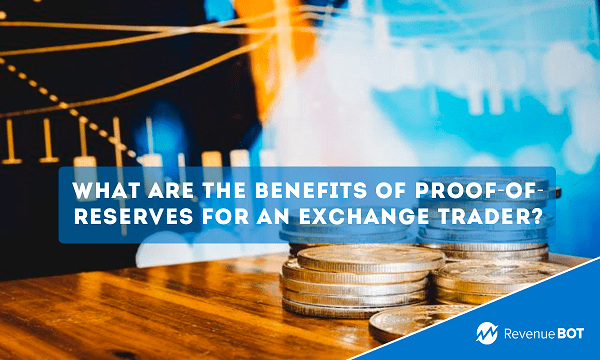
Proof of reserves has been the talk after what happened to FTX, with the investor community demanding exchanges provide attestations of their crypto holdings.
But what exactly are they, and why do they matter?

Proof of reserves (PoR) refers to a method of verifying that a trading platform or crypto firm does indeed have 1:1 backing across the digital assets it holds in custody on behalf of its customers.
Changpeng Zhao, CEO of Binance, recently announced that Binance will soon begin implementing Merkle-tree-based Proof-Of-Reserves. So, what is the Proof-Of-Reserves and why is it so valuable to investors?
Proof-Of-Reserves
Proof of Reserve or PoR is a verifiable auditing procedure that helps enhance transparency to centralised cryptocurrency reserves as well as inspect exchanges for potential fraud. PoR uses cryptographic proofs, checks the ownership of public wallet addresses, and recurring third-party audits to certify a centralised platform’s fund reserves.
It helps customers understand about the platform’s financial position and whether it has adequate funds to match customer deposits. Users can also check account balance using the cryptographic method.
Although PoR uses the blockchain technology, it still depends on the accuracy of the accounting procedures and the valuation of off-chain assets.

RoR offers customers more security to their assets. It is the only tool through which the unregulated and unlicensed exchanges can prove everything is in order.
“Customers should only work with regulated and licensed companies or one showing proof of reserve. A few companies, which have the license, are Coinbase and Kraken in the US. Yield wallets that are licensed are Cashaa, Swissborg, and Nexo in Europe,” says Kumar Gaurav, founder & CEO of Cashaa, wallet provider. But platforms, like Binance and Kucoin, which are not licensed for their entire operations, use RoR to win customers’ trust, Gaurav added.
PoR Gives Confidence To Investors
Several crypto exchanges have audited their proof of reserves recently, showing their intention to promote customers’ confidence and increase transparency.
Some of the entities have already agreed to “publish their cold wallet address,” which is a must, says Mohamed Mustafa Saidalavi, a certified Web3, Blockchain, NFT, and Metaverse expert.
Saidalavi noted that regulators play a vital role in developing and enforcing standards for crypto exchange and DeFi platforms, besides creating audit systems based on the Autonomous Decentralised Organization (DAO). He advised Indian investors to be extra careful and ensure the exchange has a cold wallet address from Merkle-root and runs on a proof-of-reserve consensus algorithm.
Is Proof Of Reserve A Lasting Solution?
Most experts believe PoR is a step forward that will help check the reserves of crypto exchanges, but it is not a long-term solution. People still have to trust the exchange’s security protocols and wallet addresses.
“Investors also have to realise that if they wish to protect their funds, they’ll have to control the private keys of their digital assets. They can’t trust an exchange or a 3rd party wallet. The volatile nature of digital assets can make even the most trusted exchanges fall,” says Mohammed Roshan, CEO and co-founder of GoSats, a crypto platform.
Which exchanges have proof of reserves?
Some exchanges and crypto lending platforms, including Kraken, Nexo, BitMEX, and Gate.io, moved to launch their proof of reserves before the implosion of FTX.
Events in November 2022, however, saw more trading platforms work towards having their own proof of reserves, which, depending on the exchange, varied in detail.

These included Binance, the world’s largest crypto exchange by trading volume, which released a Merkle Tree-based system for Bitcoin and Ethereum, with OKX, Crypto.com, and ByBit taking a similar approach.
Coinbase, on the other hand, said that as a publicly listed company, it already proves its reserves via audited SEC filings.
On November 25, the San Francisco-based crypto exchange, however, noted that “on-chain accounting is the future” and that it is exploring “various novel ways to prove reserves using more crypto native methods.”
Conclusion
As some experts believe, Proof-of-Reserves will be an advance for the crypto community. Thanks to PoR, numerous investors will no longer have to worry about the safety of their funds on crypto platforms.
No doubt it was FTX went bankrupt that led to such changes in the market, yet innovations in the crypto platforms will work for their benefit.
